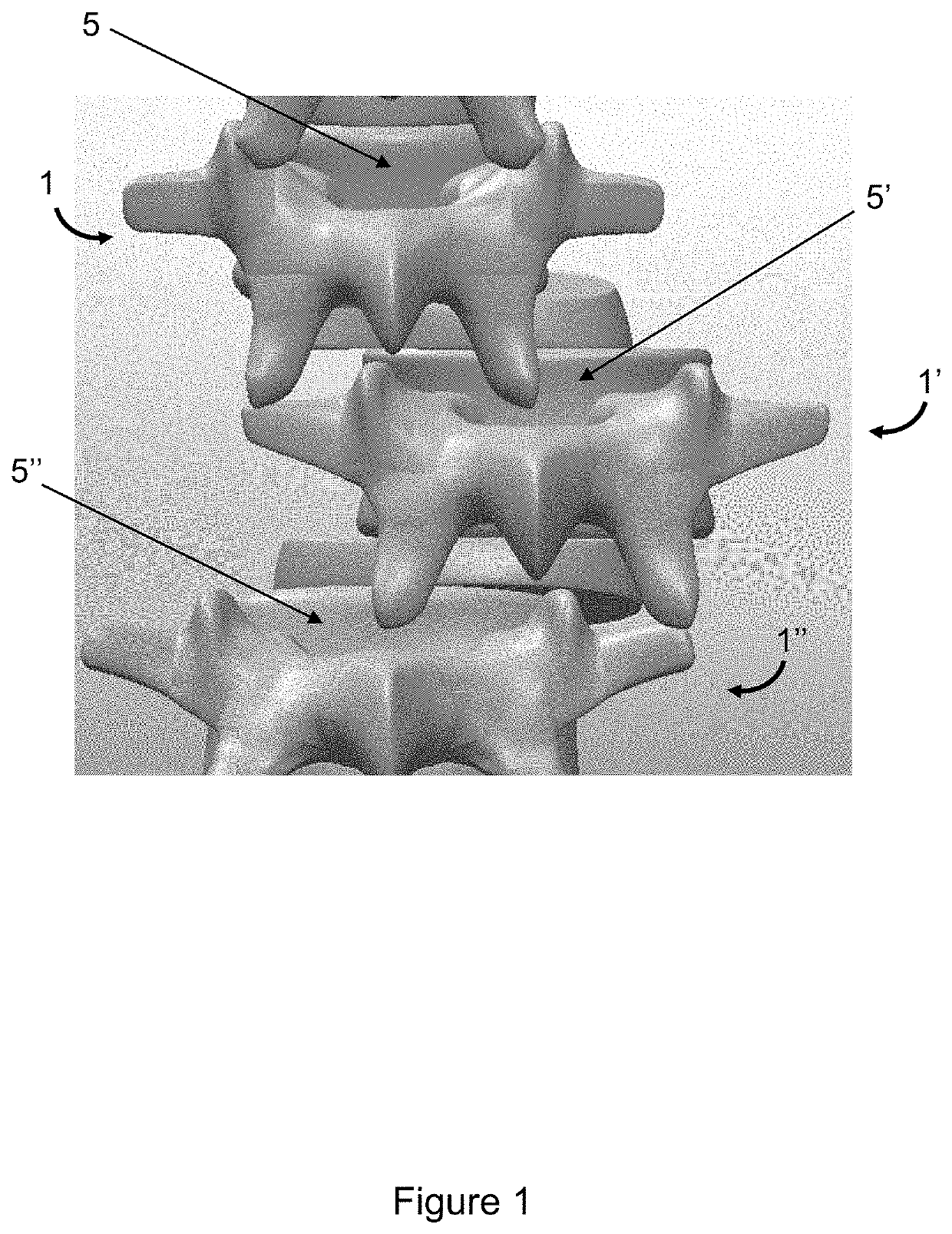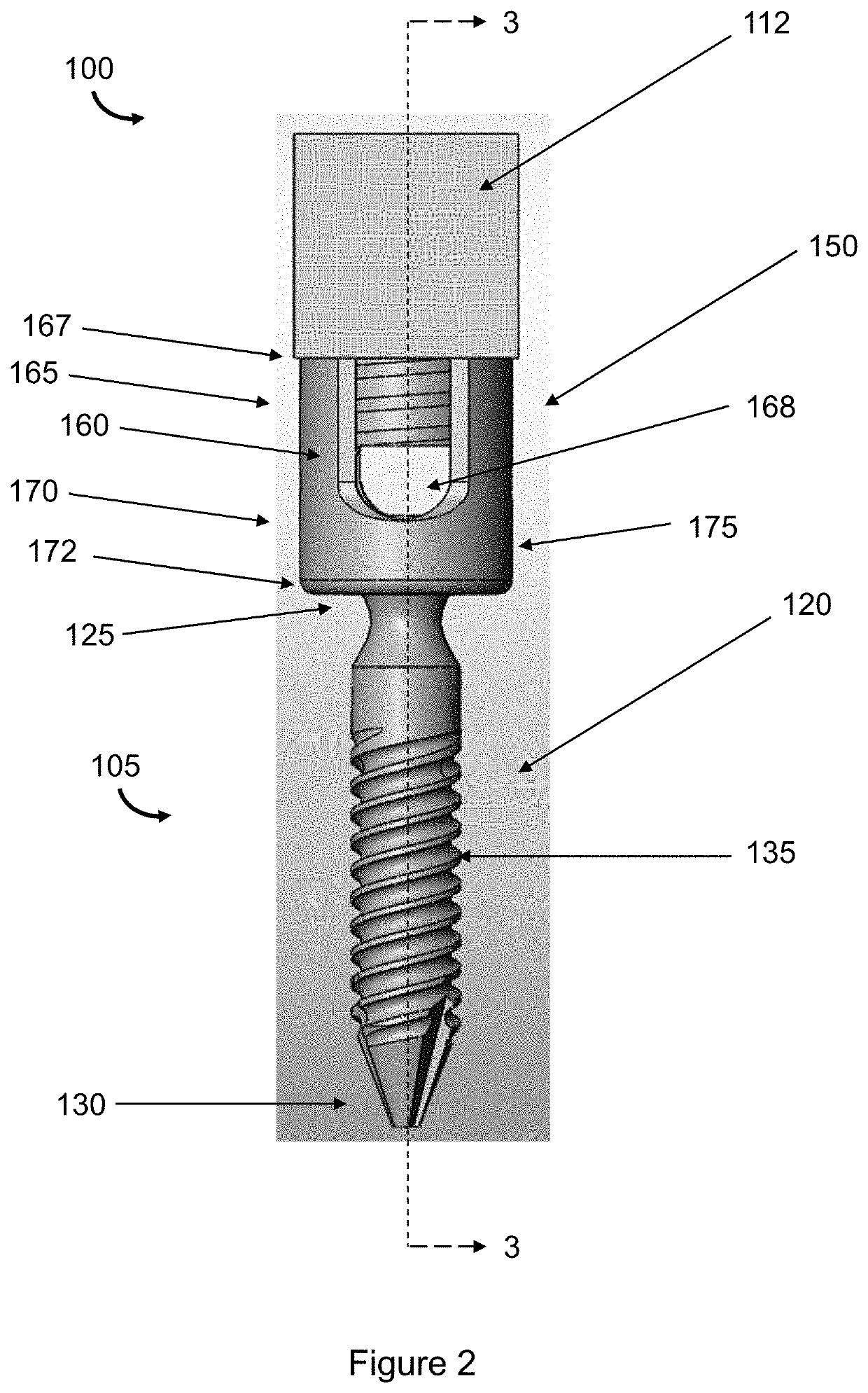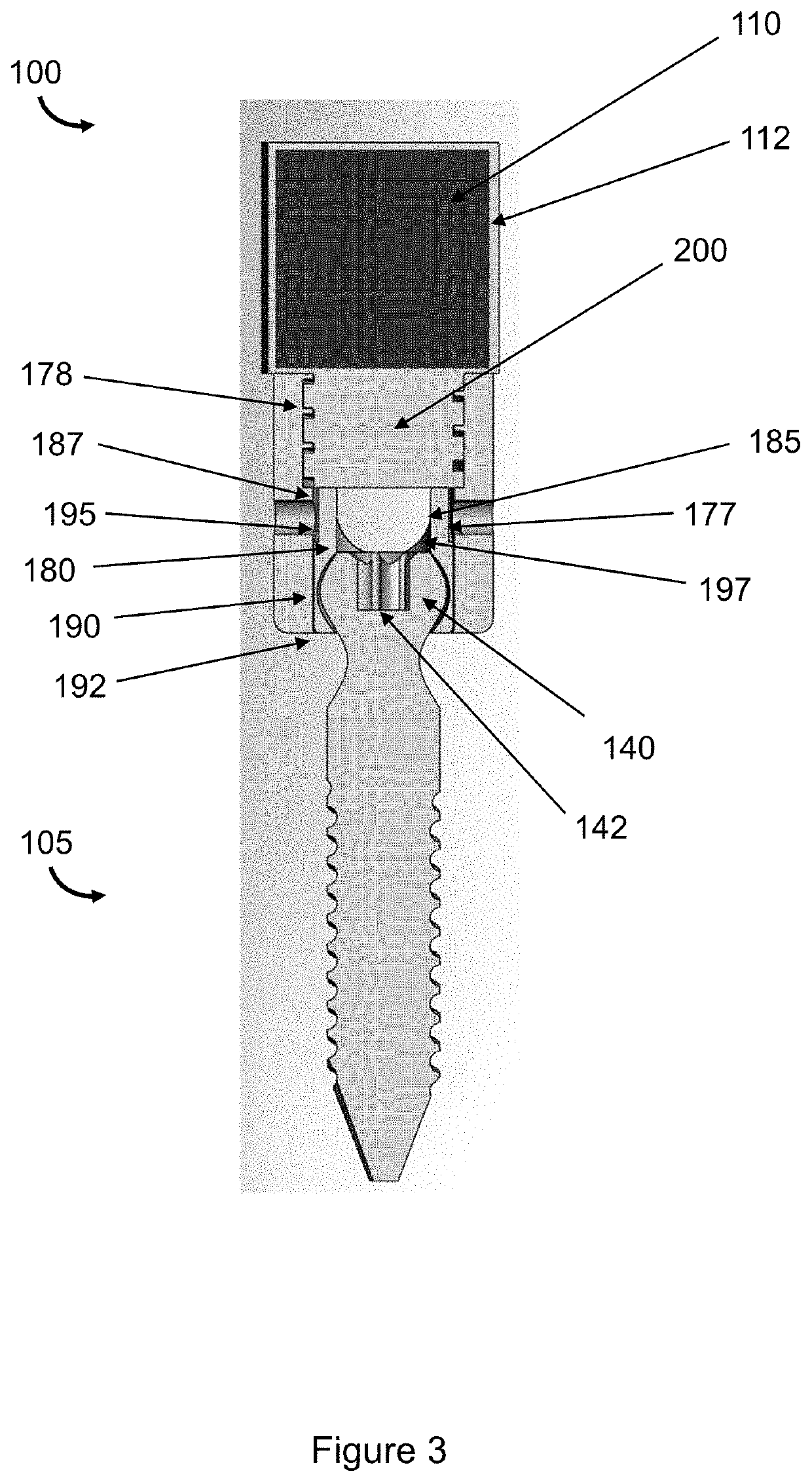Device for Realignment, Stabilization, and Prevention of Progression of Abnormal Spine Curvature
a technology of abnormal spine curvature and device, which is applied in the field of prosthetic devices, can solve the problems of not straightening the spine, scoliosis curves greater than 25 degrees are considered serious enough to require treatment, and the curve can be worsening rapidly, so as to prevent the progression of curves of spines, stabilize the spine, and reduce the risk of spine curve progression
- Summary
- Abstract
- Description
- Claims
- Application Information
AI Technical Summary
Benefits of technology
Problems solved by technology
Method used
Image
Examples
example 1
[0090]This study analyzed the centering force generated by magnetic screw devices implanted in three adjacent vertebrae that were in the area of an abnormal C-type spinal curvature, as shown in FIG. 7. The analysis considered different offset distances and the impact of implanting the magnetic screw devices in one or both pedicles of each vertebra. The analysis was conducted for magnetic screw devices comprising a 2 cm×2 cm×2 cm magnet, and implanted with a horizontal separation of 50 mm and a vertical separation of 40 mm.
[0091]The results, presented in FIG. 7 and Table 1, show that centering force at vertebral level 2 (middle vertebra of the abnormal curvature) increases as the offset distance increases until the offset distance exceeds 20 mm, at which point the centering force begins to decrease. Implantation of a magnetic screw device into both pedicles of each vertebra generated a greater centering force than the implantation of a magnetic screw device into one pedicle of each v...
example 2
[0092]This study analyzed the centering forces generated by magnetic screw devices implanted in five adjacent vertebrae that were in the area of an abnormal C-type spinal curvature. The analysis considered the impact of implanting the magnetic screw devices in one or both pedicles of each vertebra. The analysis was conducted for magnetic screw devices comprising a 2 cm×2 cm×2 cm magnet, and implanted in one of the following positions: (i) an offset distance of 10 mm (14°), a horizontal separation of 50 mm, and a vertical separation of 40 mm, as illustrated in FIGS. 8A (implanted into one pedicle) and 8B (both pedicles); or (ii) an offset distance of 20 mm (27°), a horizontal separation of 50 mm, and a vertical separation of 40 mm, as illustrated in FIGS. 9A (implanted into one pedicle) and 9B (both pedicles).
[0093]The results, presented in FIGS. 10 and 11 and in Table 2, show that the greatest centering force was generated at vertebral level 3 (middle vertebra of the abnormal curvat...
example 3
[0095]This study analyzed the centering forces generated by magnetic screw devices implanted in five adjacent vertebrae that were in the area of an abnormal S-type spinal curvature. The analysis considered the impact of implanting the magnetic screw devices in one or both pedicles of each vertebra. The analysis was conducted for magnetic screw devices comprising a 2 cm×2 cm×2 cm magnet, and implanted in one of the following positions: (i) an offset distance of 10 mm (14°), a horizontal separation of 50 mm, and a vertical separation of 40 mm, as illustrated in FIGS. 12A (implanted into one pedicle) and 12B (both pedicles); or (ii) an offset distance of 20 mm (27°), a horizontal separation of 50 mm, and a vertical separation of 40 mm, as illustrated in FIGS. 13A (implanted into one pedicle) and 13B (both pedicles).
[0096]The results, presented in FIGS. 14 and 15 and in Table 3, show that the greatest centering force was generated at vertebral levels 2 and 4 (vertebrae immediately super...
PUM
 Login to View More
Login to View More Abstract
Description
Claims
Application Information
 Login to View More
Login to View More - R&D
- Intellectual Property
- Life Sciences
- Materials
- Tech Scout
- Unparalleled Data Quality
- Higher Quality Content
- 60% Fewer Hallucinations
Browse by: Latest US Patents, China's latest patents, Technical Efficacy Thesaurus, Application Domain, Technology Topic, Popular Technical Reports.
© 2025 PatSnap. All rights reserved.Legal|Privacy policy|Modern Slavery Act Transparency Statement|Sitemap|About US| Contact US: help@patsnap.com



